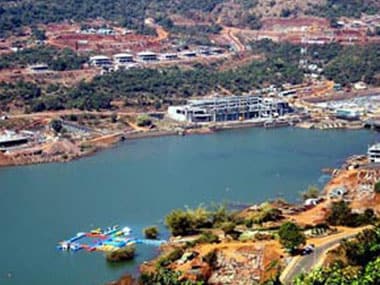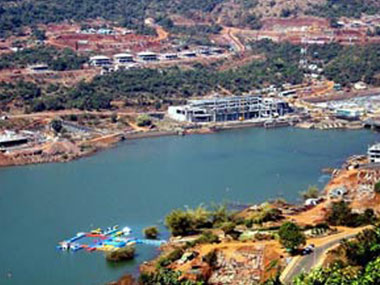The Western Ghats are one of the most ecologically sensitive zones on planet Earth. And yet rampant unrestricted urbanisation and industrialisation is damaging these ranges and forests that have been around for a time longer than the Himalayas. CNN-IBN took a journey to find out more about these hills and what it would take to maintain their ecological balance. The sacred groves of the Sahyadri Madhav Gadgil, one of the most respected conservationists working in the Western Ghats, has documented over 200 such groves across Maharashtra. He has put together the documents that have been presented to the Environment Ministry over industries in this zone. There are over 1800 dams in this the tiny part of the Saghyadri and many more are planned. These plans could submerge as much as 6000 hectares of forest land and that will in turn lead to its own ecological problems. [caption id=“attachment_847829” align=“alignleft” width=“380”]
 Lavasa - is one of the most controversial projects in the Western Ghats. PTI.[/caption] The leopard rescue centre of Junnar The Manikdoh rescue centre, run by Wildlife SOS, has rescued several leapards, treated and rehabilitated them. Over 100 leopards were translocated across Maharashtra but it only turned out to be a disastrous step for the leopards. Disoriented leopards tried to return to their original homes. Since the faulty translocation process stopped conflict has stopped, say the officials of the leopard rescue centre. The bitter truth of Lavasa Lavasa, touted to be India’s first planned hill station ran into controversy when the courts dubbed construction illegal and said that the project did not have necessary environmental clearances. Local villagers claim that the Lavasa project are depriving them of water. Lavasa has created artificial dams, which have caused streams in the area to dry up. Protests from the local villagers are not taken lightly - as the CNN-IBN team witnessed. A team from Lavasa came and requested the CNN-IBN team to stop filming the moment the villagers started registering their protest on camera. The Konkan coast of Ratnagiri The Konkan coast and its waters are rich with marine biodiversity but all this is under threat. There are 11 power plants coming up and with that there will be at least 11 ports. This could lead to the destruction of eco-sensitive sites as the number of power plants on such a small expanse of land would cause mean temperatures of the surrounding water bodies.
Lavasa - is one of the most controversial projects in the Western Ghats. PTI.[/caption] The leopard rescue centre of Junnar The Manikdoh rescue centre, run by Wildlife SOS, has rescued several leapards, treated and rehabilitated them. Over 100 leopards were translocated across Maharashtra but it only turned out to be a disastrous step for the leopards. Disoriented leopards tried to return to their original homes. Since the faulty translocation process stopped conflict has stopped, say the officials of the leopard rescue centre. The bitter truth of Lavasa Lavasa, touted to be India’s first planned hill station ran into controversy when the courts dubbed construction illegal and said that the project did not have necessary environmental clearances. Local villagers claim that the Lavasa project are depriving them of water. Lavasa has created artificial dams, which have caused streams in the area to dry up. Protests from the local villagers are not taken lightly - as the CNN-IBN team witnessed. A team from Lavasa came and requested the CNN-IBN team to stop filming the moment the villagers started registering their protest on camera. The Konkan coast of Ratnagiri The Konkan coast and its waters are rich with marine biodiversity but all this is under threat. There are 11 power plants coming up and with that there will be at least 11 ports. This could lead to the destruction of eco-sensitive sites as the number of power plants on such a small expanse of land would cause mean temperatures of the surrounding water bodies.
Western Ghats: Why we need to restore its ecology now
FP Staff
• June 6, 2013, 14:30:12 IST
The Western Ghats is under severe threat from rapid urbanisation and industrialisation. CNN-IBN finds out why.
Advertisement
)
End of Article